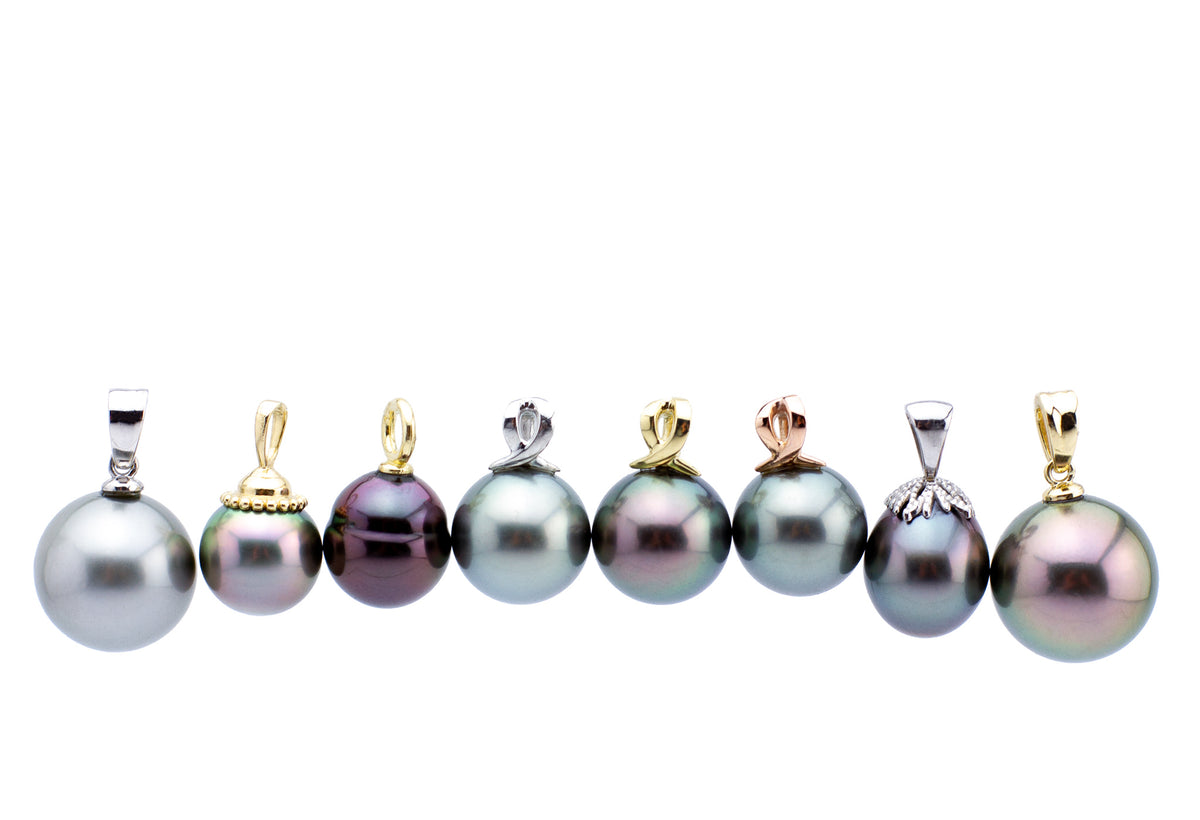A day in the life of Kamoka Pearl.
An ordinary day on the farm starts at about 6am. Laurent climbs down from the farmhouse's crow's nest that can be seen in any picture of the farm. He puts on a kettle of hot water while the other workers filter in. The rest of the crew live on one of the two "motus" or islets in the atoll that make up the land mass of Kamoka Pearl. With a little luck there will be a visitor or two that have made fresh bread for a Euro-style breakfast.

Cups of black instant coffee get tossed back, bread is slathered with canned NZ butter and the gears click into place. Heiarii and Laurent grab freediving gear and do a quick run out to the lines to get oysters for Timi and Aristide to work on for the day. The oysters grow on horizontal polypropylene lines that are from 200 to 600 meters in length and submerged at about 7 meters of depth over 40 meters of clean lagoon water.
While Laurent and Heiarii are diving, Timi is sharpening his scalpels, pouring his nuclei from bags and filling a water bottle for some long hours in his chair. Meanwhile, Aristide is opening oysters from the previous day and starting the painstaking process of searching for oysters that have a sufficiently colorful shell. Once he finds these rare beauties, he'll put them aside and use them throughout the day for tissue donors. A tissue donor is an oyster that is selected for it's exceptional color and then processed for it's mantle organ. The mantle is what secretes the shell so in choosing shells of a particular color, we can influence the eventual color of the pearl. One donor oyster will usually provide 20 -30 mantle pieces.

Soon after the divers return, Timi will have a full tray of oysters that Laurent has wedged gently open with clothespin pegs. He'll then implant each oyster that he deems ready for the operation with a nucleus and a piece of living mantle tissue that Aristide has prepared for him.
Timi's challenge will be to graft as many oysters, as well as he can before lunch. His dexterity will determine the quality of the pearls, the success rate and the number of oysters that make it safely through the operation. All of the investment of a pearl farm rides on the shoulders of the grafter so predictably many farms have been sunk by sub-par grafters. It's a job that requires skill, patience and long hours of practice to reach a passable status. Timi joined the team in 1993 and has been grafting since around 2003 His mastery of the craft is immediately obvious to anyone who has the pleasure of observing him.
At lunch time, everything will get a saltwater wash down with a firetruck-style black hose and the whole crew will stop for a needed break and food. Food is usually rice with fish or chicken with some sort of salad that often will have some oyster muscle (that tastes a bit like a scallop) in it seasoned lightly with lime or vinegar (yum!).

Everybody helps with the cleaning and dishes and after about an hour has passed, work sparks back up until around 3PM. The oysters that have been grafted throughout the day will then get brought back out to the lines, away from the farm where the water is most free from silt. Timi is usually quick to join the dive crew as a dip in the lagoon is more than welcome after a full day of sitting in a chair.
After a final clean-up the crew will often throw freediving gear and spearguns in the boat and head to the pass for some fish, adventure and fun. As well as being great exercise and a guaranteed good time, it's also a moment of camaraderie. A tight-nit team is crucial to the overall health of the farm and the oysters as well as the quality of the pearls.
This is a fly-over account of a typical day. If anyone wants more details about different parts mentioned above, please just leave questions in the comments below. Thanks!

it’s me again, by the way i had experience in jewlery and i doo sculpture so i will be very carefull with your preciouse pearls. Maruuru again and best wishes.
marc
Thanks Shannon! I completely agree that it’s all about the people. That’s a hard thing to communicate sometimes. Was wondering if you saw the video Kojima Pearl posted on our page? It does a good job of showing some good times. :)
This was REALLY interesting Josh (and well written). I’ve always wondered about the whole process of making pearls. Your explanation helped me to understand not only the details but the importance you place on technique and quality. I’m looking forward to reading more. P.S. The pictures were SO important. It showed AHE, (which to me, is all about the people who live and work there) as opposed to just a working pearl farm. Thank you for including them.